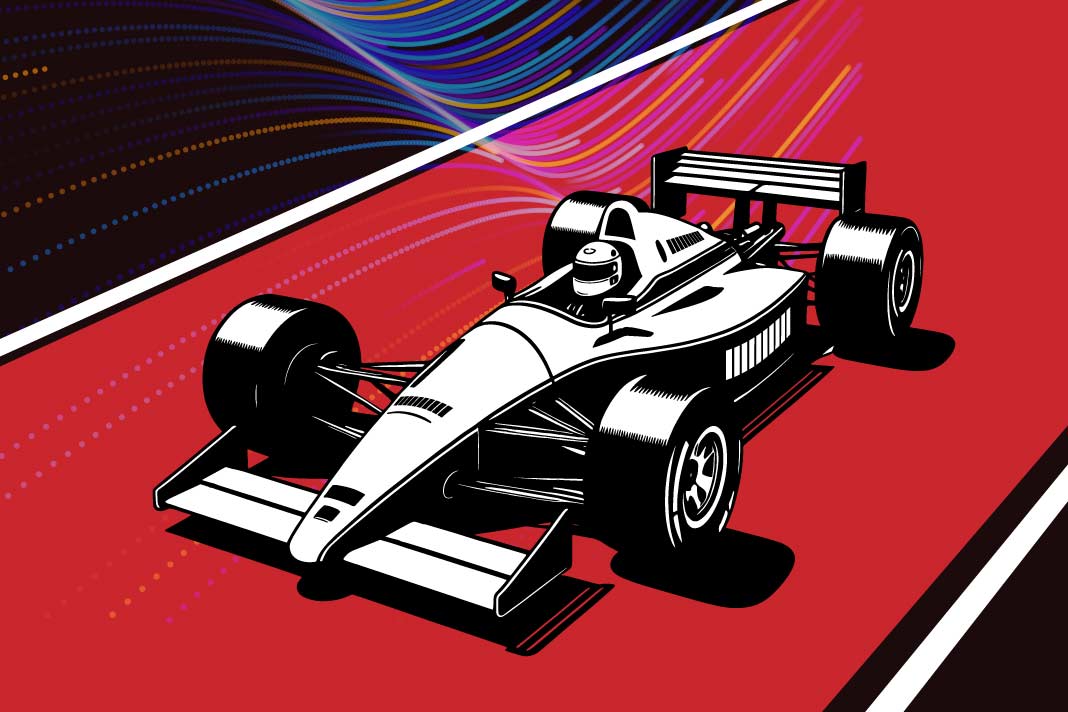Discover how Formula 1 has transformed into a data-driven sport, where analytics influence car design, race strategies, and performance optimization.
Formula 1, the pinnacle of motorsport, has always been a technical marvel, exemplifying innovation, speed, and precision. However, a profound transformation has unfolded over the last two decades. The sport has evolved into a data-driven arena where advanced analytics, machine learning, and high-performance computing have taken center stage. What was once dominated by raw mechanical ingenuity and driver intuition is now fundamentally governed by terabytes of real-time data and predictive models. The competitive edge in modern Formula 1 no longer hinges solely on raw horsepower or aero packages—the strategic application of data defines success.
This piece, the first in a three-part series, explores the paradigm shift that has turned Formula 1 into a data-centric sport. It explains how analytics influence every decision—from car design to race day strategies—and illustrates why data is now the most valuable “driver” on the grid.
The Data-Driven Renaissance in Formula 1
Formula 1 has always been an engineering battlefield. However, recent regulatory changes and technological advancements have shifted the sport’s focus. With limitations on traditional resources like wind tunnel testing and engine development, teams have turned to data to maximize performance within these constraints. This transition marks a clear paradigm shift from the instinctive racing of yesteryear to a modern, methodical approach driven by analytics.
At the heart of this transformation lies an astonishing explosion of sensor technology, cloud computing power, and AI-assisted simulations. Teams are now capturing and analyzing millions of data points per second to extract every millisecond of advantage. For instance, during a typical race weekend, both cars from a single team can generate upwards of 1 terabyte of raw data. This includes telemetry, aerodynamic feedback, tire degradation metrics, and even the driver’s biometric data. This information is processed at near-instantaneous speeds to inform everything from car setups to in-race decisions.
From Gut Feel to Predictive Analytics
Historically, race strategies heavily relied on personal experience and rudimentary trend analysis. Strategies like tire management or pit-stop timing were often based on driver feedback and historical performance. But the speed at which data is collected, processed, and acted on has redefined how races are managed.
Take telemetry as an example. Real-time data transmission from the car to the pit wall allows engineers to monitor hundreds of variables—temperatures, pressures, suspension behavior, and even how the driver uses the throttle and brakes. A driver’s feedback post-session is no longer the sole source of insight. Instead, advanced simulations and predictive models can forecast performance outcomes. For instance, machine learning tools analyze tire degradation patterns under various conditions to determine the optimal pit window. These analytics can mean staying out of a critical extra lap or emerging into clean air ahead of a rival.
Mercedes-AMG Petronas’ 2021 strategic victory in the Spanish Grand Prix exemplifies this. By leveraging tire wear data and predictive algorithms, Lewis Hamilton was called in for an unplanned early pit stop. The move uniquely placed him to chase down the race leader with fresher tires—a strategy derived entirely from analyzing real-time degradation curves and race projections. The result? A perfectly timed attack for victory, where traditional intuition may have faltered.
Also Read: Why Data Observability is Essential for Modern Data Teams
Analytics and the Quest for Marginal Gains
If Formula 1 is a game of efficiency, marginal gains are its currency. These incremental improvements can make the difference between winning and losing in a sport where races are often decided by fractions of a second. Data analytics plays a pivotal role in uncovering these breakthroughs.
Fine-Tuning Car Design
Each Formula 1 car is a symphony of science and engineering. Advanced analytics ensure every component—from the front wing to the power unit—is optimized for peak performance. Aerodynamics, long regarded as the key to success, is particularly data-driven. Computer-aided aerodynamics is powered almost entirely by Computational Fluid Dynamics (CFD) simulations and wind tunnel testing, but the digital transformation has accelerated its impact. With cloud computing platforms like AWS, full CFD simulations that once took 60 hours can now be completed in under 12 hours, significantly improving design iterations.
For example, Red Bull Racing has utilized Oracle Cloud Infrastructure to run billions of simulations each weekend, benchmarking the performance impact of microscopic design changes. These insights allow engineers to fine-tune the car’s performance under specific race conditions, achieving maximum downforce on tight tracks like Monaco or straight-line speed on power circuits like Monza. These simulations’ sheer speed and depth would have been inconceivable a decade ago, showing how big data isn’t just an enabler—it has become the competitive standard.
Optimizing Race-Weekend Setup
Another application of analytics lies in pre-race preparation. Every race is unique, with variables including track layout, weather, and tire compounds requiring meticulous calibration of the car’s setup. Teams analyze millions of potential combinations in simulation environments to find the ideal balance of aerodynamics, grip, and mechanical reliability.
For instance, extensive pre-race modeling helps fine-tune details such as suspension stiffness, brake balance, and even engine power modes. Data analysis allows engineers to simulate thousands of laps under varying conditions long before the car turns a wheel on track. With AI-assisted predictive tools, teams now know ahead of time how different ride heights or fuel loads will influence lap times and tire wear for every corner, even before the car leaves the garage.
McLaren’s 2023 resurgence serves as a standout example. Leveraging machine learning-based simulators, the team uncovered innovative ways to adjust their chassis setup, improving cornering consistency. This allowed them to secure podium finishes at circuits where they had struggled historically, demonstrating how proactivity in data use rewrites performance limits.
Also Read: Taming the Data Deluge: Why Data Orchestration is Critical
A Central Nervous System for Performance
To truly understand the role of data in Formula 1, one can think of it as the sport’s central nervous system. Seamlessly connecting everything from car telemetry to driver biometrics, data ensures that nothing is left to chance.
Driver performance data is also growing increasingly granular. From feedback on throttle modulation through each turn to heart rate monitoring during high-pressure moments, teams use analytics to coach drivers. Biometric gloves now provide real-time data on pulse rates and blood oxygen levels, giving teams a deeper understanding of a driver’s physical and mental state throughout the race. This combination of human insight with machine-driven analytics creates a feedback loop that enhances decision-making both on and off the track.
The combined brainpower of data engineers, race strategists, aerodynamicists, and software developers underscores how central data has become to Formula 1. Teams that fail to adopt strong data strategies are no longer just slower—they’re out of contention entirely. This growing reliance on data, far from diminishing the sport’s appeal, has elevated its technological sophistication and strategic intrigue.
Closing Thoughts
Formula 1 has reached a point where data is inextricably woven into the fabric of the sport. The era of relying on intuition and limited metrics has long been replaced by hyper-detailed telemetry, cloud computing, and predictive analytics. By the end of race weekends, data points drive not only the outcomes but also the lessons carried into the next event. Analytics has turned Formula 1 into a playground of perpetual optimization where innovation is paramount.
Data doesn’t just add context; it defines modern Formula 1. And as this series continues, we’ll look deeper into how data is captured, processed, and leveraged to achieve performance gains in a sport where milliseconds set the boundaries between triumph and despair.
Stay tuned for Part 2, where we’ll explore the staggering complexity of Formula 1’s data collection ecosystem—from the hundreds of sensors aboard each car to the cutting-edge telemetry network that makes real-time decision-making possible.



